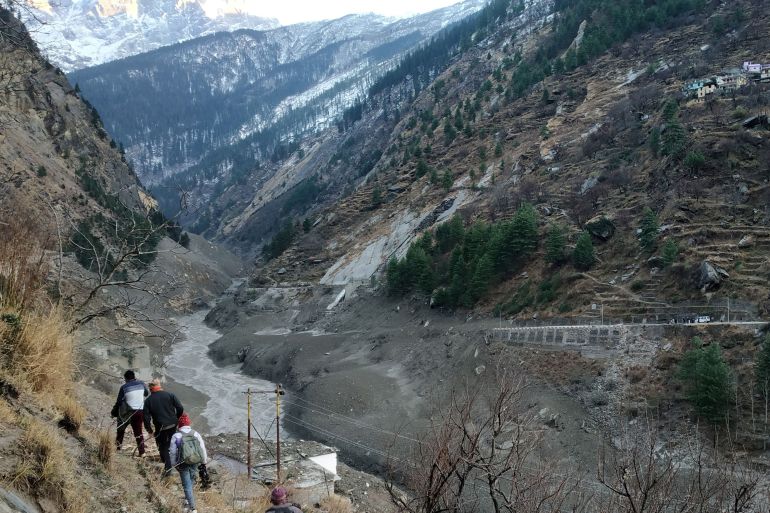Why glaciers burst and send floods downstream
As a burst Himalayan glacier wreaks havoc in India, we look at how glaciers and glacial lakes form, and why they sometimes break.

The floods that slammed into two hydroelectric plants and damaged villages in northern India on Sunday were set off by an upstream break in a western Himalayan glacier.
The glacier is one of a large cluster in the Himalayas, which are part of India’s long northern border.
Keep reading
list of 4 items14 dead, 170 missing after Himalayan glacier bursts in India
China to build the world’s biggest dam on sacred Tibetan river
‘Guests in our own homes’: The forest tribe of India’s Himalayas
Here is how glaciers and glacial lakes form and why they sometimes break:
How glaciers and glacial lakes form
Glaciers can be found on every continent except Australia, and some are hundreds of thousands of years old.
They comprise layers of compressed snow that move or “flow” due to gravity and the softness of ice relative to rock.
A glacier’s “tongue” can extend hundreds of kilometres from its high-altitude origins, and the end, or “snout,” can advance or retreat based on snow accumulating or melting.
“Ice may flow down mountain valleys, fan out across plains, or in some locations, spread out onto the sea,” according to the National Snow and Ice Data Center.
Proglacial lakes, formed after glaciers retreat, are often bound by sediment and boulder formations.
Additional water or pressure, or structural weakness, can cause both natural and man-made dams to burst, sending a mass of floodwater surging down the rivers and streams fed by the glacier.
Why did the glacier burst?
It is not yet known what caused part of the Nanda Devi glacier to snap off on Sunday morning, sending floodwater surging downstream towards power plants and villages in India’s northern state of Uttarakhand.
Seismic activity and a buildup of water pressure can cause glaciers to burst, making climate change a particular concern.
High temperatures coupled with less snowfall can accelerate melting, which causes water to rise to potentially dangerous levels.
“Most mountain glaciers around the world were much larger in the past and have been melting and shrinking dramatically due to climate change and global warming,” said Sarah Das, an associate scientist at Woods Hole Oceanographic Institute.
The region where the glacial burst occurred is prone to landslide and flash flooding, and environmentalists have cautioned against building there.
Can such disasters be predicted?
Past deadly and destructive glacial floods have occurred in Peru and Nepal.
A number of imminent potentially deadly glacier burst and flood situations have been identified worldwide, including in the Himalayas and South American Andes.
But the remote locations of glaciers and a lack of monitoring mean we do not have a clear understanding of how often they occur and if they are increasing, Das said.
“Given the overall pattern of warming, glacier retreat, and increase in infrastructure projects, though, it seems natural to hypothesise that these events will occur more frequently and will become overall more destructive if measures are not taken to mitigate these risks,” said Das.
“There are many glaciers and glacial dammed lakes across the Himalayas, but most are unmonitored,” Das said.
“Many of these lakes are upstream of steep river valleys and have the potential to cause extreme flooding when they break. Where these floods reach inhabited regions and sensitive infrastructure, things will be catastrophic.”
A 2010 information page published by the International Centre for Integrated Mountain Development called for more glacier monitoring in the Hindu Kush Himalayas to better understand “the real degree of glacial lake instability”.